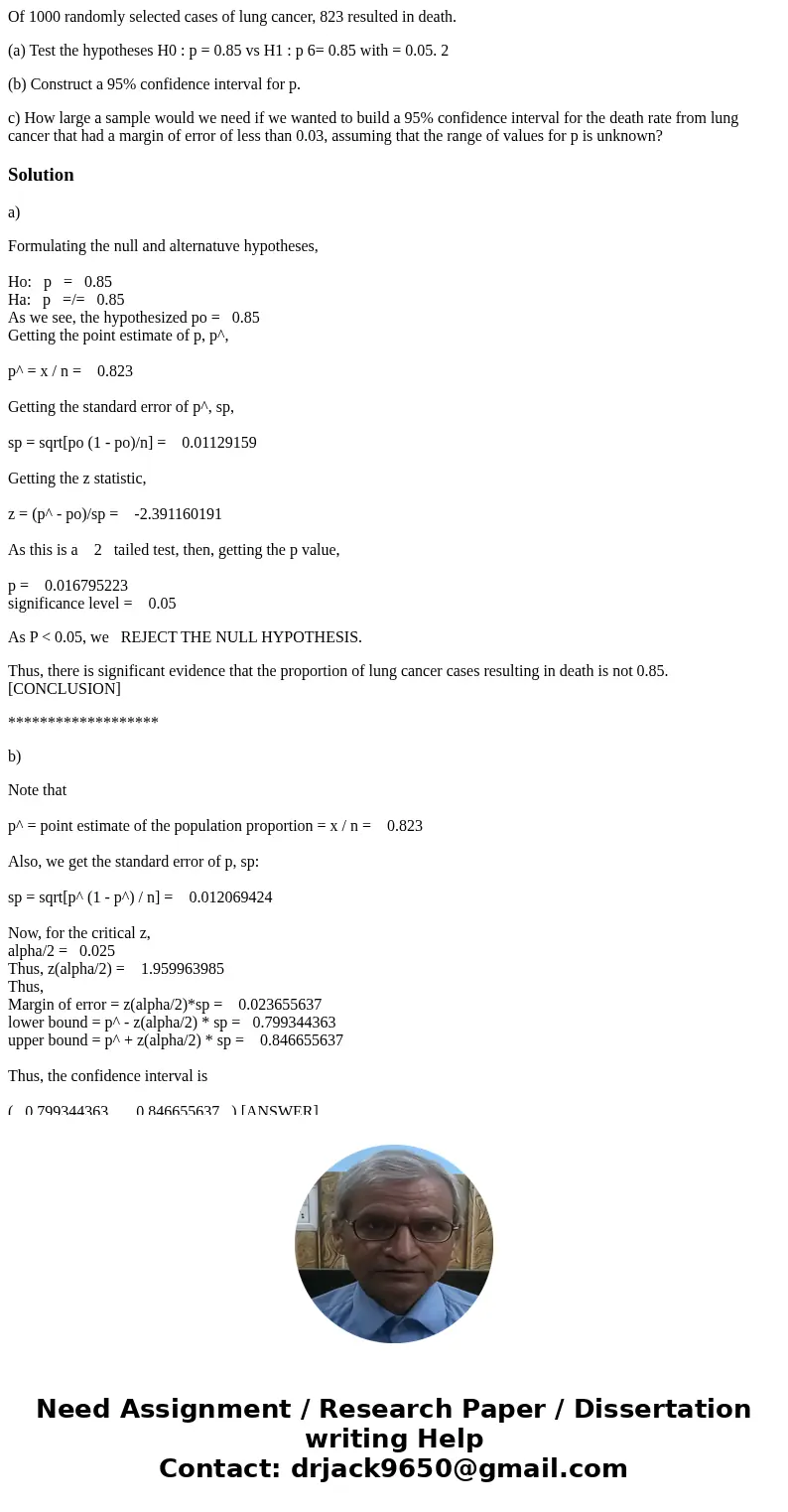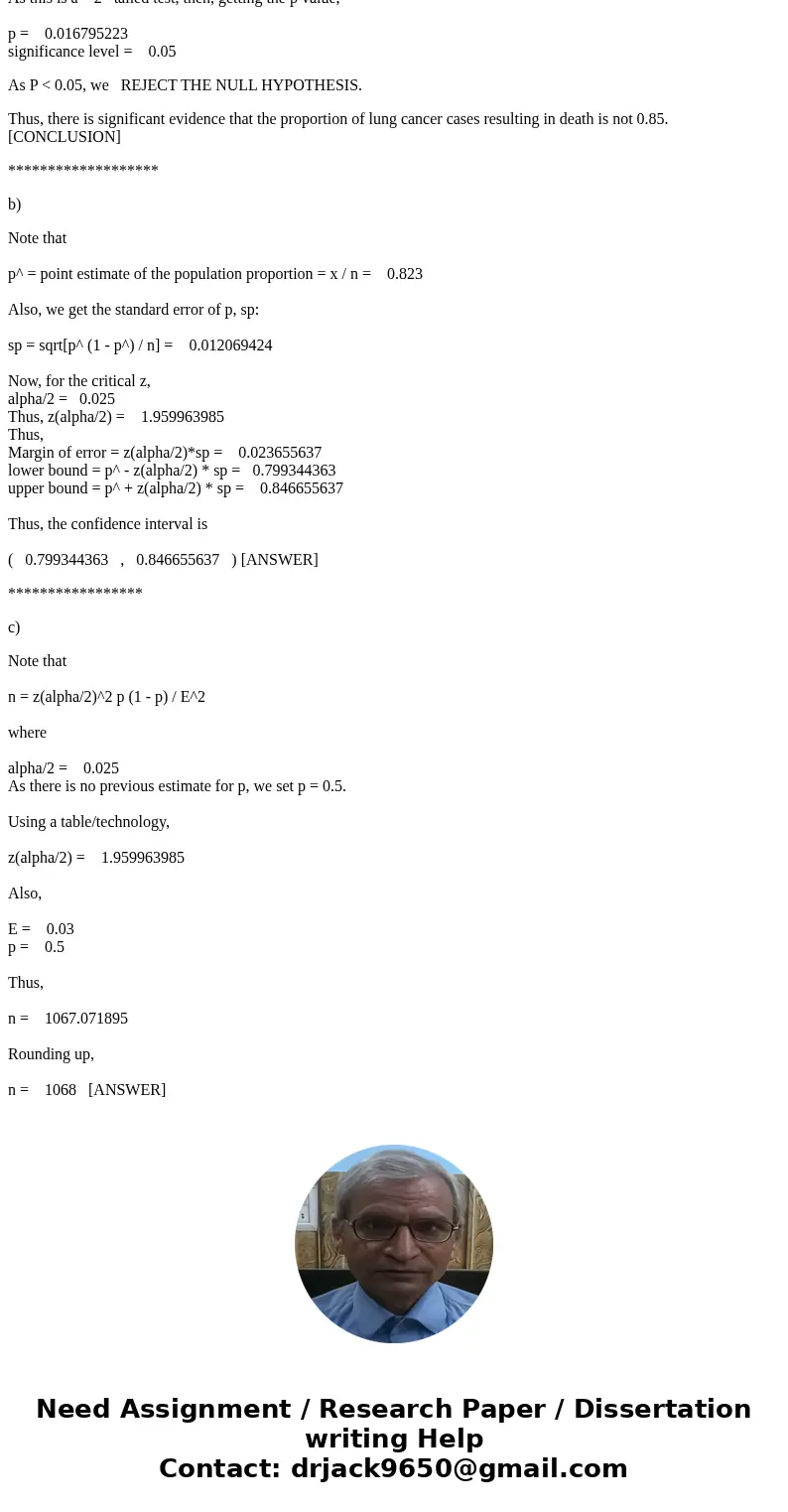Of 1000 randomly selected cases of lung cancer 823 resulted
Of 1000 randomly selected cases of lung cancer, 823 resulted in death.
(a) Test the hypotheses H0 : p = 0.85 vs H1 : p 6= 0.85 with = 0.05. 2
(b) Construct a 95% confidence interval for p.
c) How large a sample would we need if we wanted to build a 95% confidence interval for the death rate from lung cancer that had a margin of error of less than 0.03, assuming that the range of values for p is unknown?
Solution
a)
Formulating the null and alternatuve hypotheses,
Ho: p = 0.85
Ha: p =/= 0.85
As we see, the hypothesized po = 0.85
Getting the point estimate of p, p^,
p^ = x / n = 0.823
Getting the standard error of p^, sp,
sp = sqrt[po (1 - po)/n] = 0.01129159
Getting the z statistic,
z = (p^ - po)/sp = -2.391160191
As this is a 2 tailed test, then, getting the p value,
p = 0.016795223
significance level = 0.05
As P < 0.05, we REJECT THE NULL HYPOTHESIS.
Thus, there is significant evidence that the proportion of lung cancer cases resulting in death is not 0.85. [CONCLUSION]
*******************
b)
Note that
p^ = point estimate of the population proportion = x / n = 0.823
Also, we get the standard error of p, sp:
sp = sqrt[p^ (1 - p^) / n] = 0.012069424
Now, for the critical z,
alpha/2 = 0.025
Thus, z(alpha/2) = 1.959963985
Thus,
Margin of error = z(alpha/2)*sp = 0.023655637
lower bound = p^ - z(alpha/2) * sp = 0.799344363
upper bound = p^ + z(alpha/2) * sp = 0.846655637
Thus, the confidence interval is
( 0.799344363 , 0.846655637 ) [ANSWER]
*****************
c)
Note that
n = z(alpha/2)^2 p (1 - p) / E^2
where
alpha/2 = 0.025
As there is no previous estimate for p, we set p = 0.5.
Using a table/technology,
z(alpha/2) = 1.959963985
Also,
E = 0.03
p = 0.5
Thus,
n = 1067.071895
Rounding up,
n = 1068 [ANSWER]


 Homework Sourse
Homework Sourse